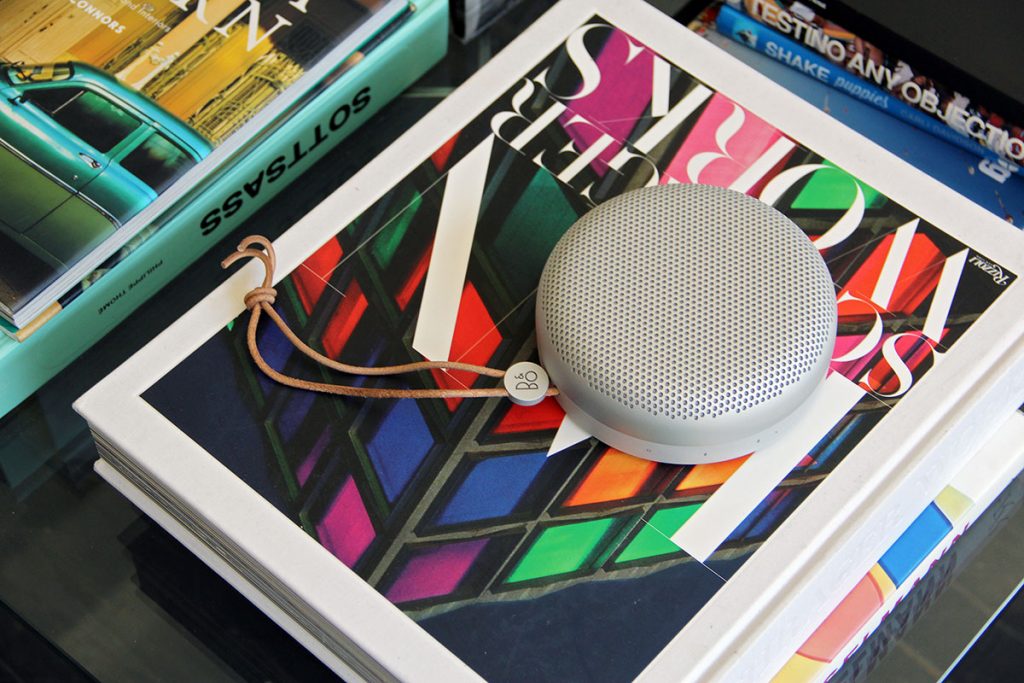How Bang & Olufsen’s BeoLab 90 Became a Reality
We traveled to Denmark to learn what warranted the speaker’s $39K price tag
Strange, beautiful, different. These aren’t the typical adjectives given to hi-fi speakers, and yet they’re the best words to describe Bang & Olufsen’s new contemporary masterpiece, the BeoLab 90 active loudspeakers. Years in the making, the finished product was unveiled to the public last week—and much of the resulting press focused on the price tag of $39,000 per speaker unit (and sold in a minimum of one pair)—but there’s far more to discuss here than that. For the launch, CH was on the ground at Bang & Olufsen’s headquarters and factories in Struer, Denmark to hear the sculptural speakers in person, and to learn how they came to be. Observing the design, assembly and testing processes informed the story of something larger at hand: a passionate company dedicated to sound and design, but also to people. From the researchers and factory workers in Struer to those around the world using the audio and video products at home—and even the recording artists and engineers themselves—there’s a sense of respect regarded to all.
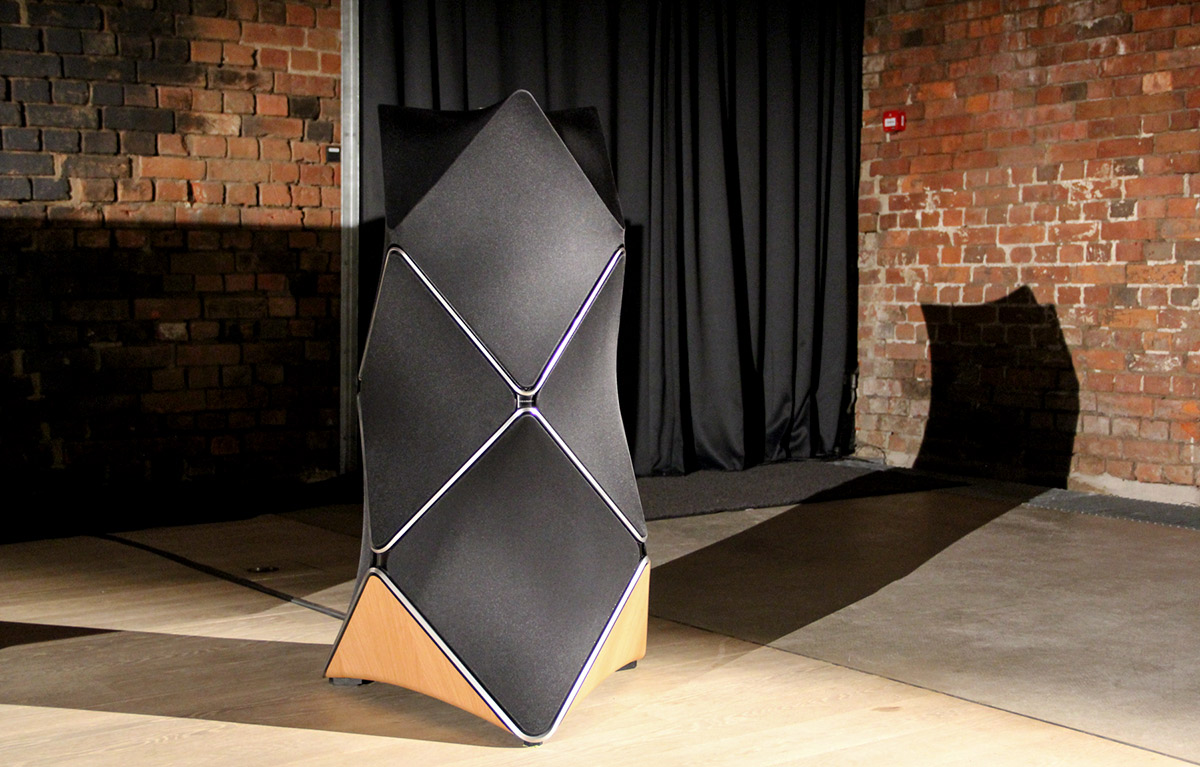
Over the decades, Bang & Olufsen has earned a reputation for future-forward design. Their much-celebrated Beogram 6000 from 1974 (now in MoMA’s collection) still looks like a record player from the next century. Their last statement speaker, the BeoLab 5, came out 12 years ago—yet the company still receives inquiries about when the product will be available because unaware customers think it’s new. Unusually, with the new BeoLab 90, form was entirely dictated by function, which we’ll get to later.
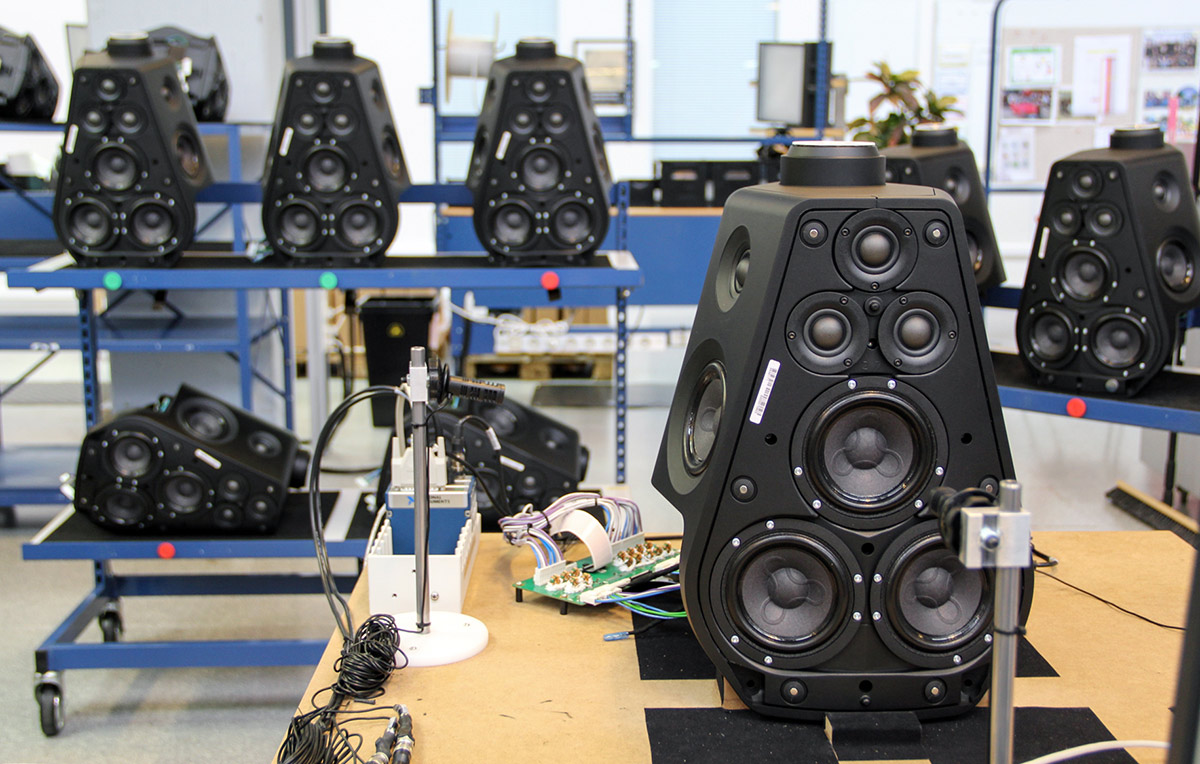
“Our mission when we make any speaker is to deliver, in a customer’s living room, the ability to hear what the artist heard in the recording studio when they did the recording,” says B&O Technology Specialist in Sound Design, Geoff Martin as he introduced the BeoLab 90. “So in theory, when you sit on your couch with our speakers, you hear what either the mastering or recording engineer heard back in the studio.” This is a challenging feat because recording studios and living rooms are two very different spaces, but B&O meets it with a cutting-edge solution. Four woofers, seven mids and seven tweeters make up a total of 18 Danish-made Scan-Speak drivers (arguably the best but cost a pretty penny) placed in multiple directions on the BeoLab 90. There’s an amplifier (custom-designed for B&O), DSP and filtering for each of its 18 drivers, making them truly independent.

The problem with most ‘normal’ loudspeakers, Martin explains to us non-audio experts, is that the sound it reproduces bounces to the side walls and reflects, overriding the information from the recording. And as a result, you lose distance and depth. In typical situations, the low frequencies travel everywhere and the high frequencies don’t, for an unnatural 3D effect. “Since we have control of those extra drivers, we can make them whatever we want,” says Martin. One tweeter, one midrange and one woofer are played like a typical 3-way loudspeaker. The extra drivers arranged on the side and back absorb sound or send more energy. This gives the listener incredibly precise control of the speakers’ directivity (via the app or even the B&O television) for different scenarios: a narrow beam width when listening to your favorite album alone (recreating that recording environment to near-perfection) or a wider beam width when multiple individuals are watching a movie (which sacrifices some depth in the recording to make a similar experience for everyone).
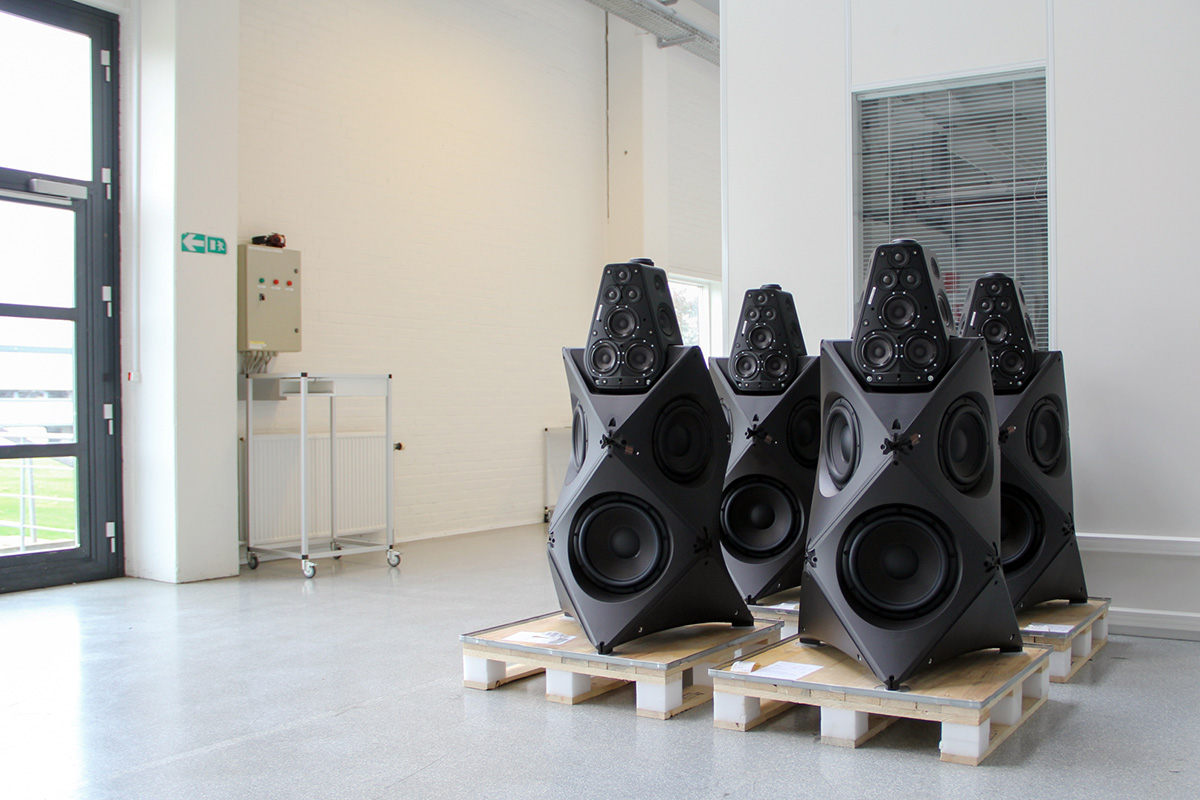
Because there are so many drivers pointing every which way, the signal processing (the speaker’s “brain”) can be altered to determine which one will be the “main” beam. Sound can be steered in five different directions—you’re not just stuck with one as is the case with most speakers. Thus, regardless of where the BeoLab 90s are placed and regardless of where you’re sitting, you can create a sweet spot of sound wherever you’d like. For parties, the sound can even be emitted at a full 360º. Pair this Beam Direction Control and the aforementioned Beam Width Control with BeoLab’s new Active Room Compensation feature and you’ve got yourself an accurate, uniquely versatile speaker that tailors to your lifestyle and needs, instead of vice versa.

Despite its visually striking final result, the BeoLab 90 is one of the unique cases for Bang & Olufsen where the acoustic requirements dictated the form. Ideas for a “dream loudspeaker” (if free from typical restraints such as component costs, size, design, etc.) had been bubbling around in the acoustic department for quite some time (Geoff Martin has an informative behind-the-scenes blog post describing this development period from the acoustic department’s perspective). And with the upcoming 90th anniversary of the brand, it became the right time to focus on this special project and dedicate the proper resources, time and people.
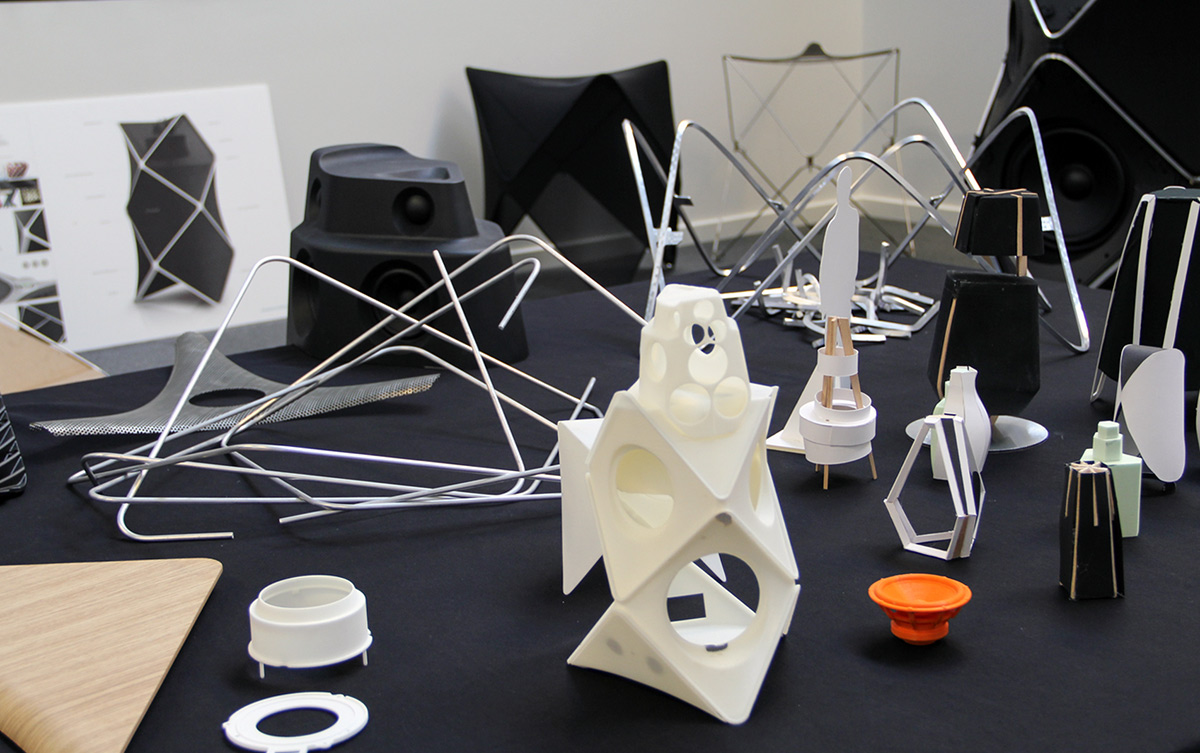
Cologne, Germany-based Frackenpohl Poulheim was tapped for the project; the studio worked previously with Bang & Olufsen on two music systems, BeoSound Essence and BeoSound Moment, but never a loudspeaker. (We’ve personally admired their work on HEIMPLANET’s inflatable geodesic camping tent). Boundaries they were given included the specific 18-speaker arrangement, an incredible amount of power (more than 8,000 watts, which translates to a lot of heat), its unusually large size (B&O’s speciality is compact products), and of course, an unprecedented design that’s expected of B&O.
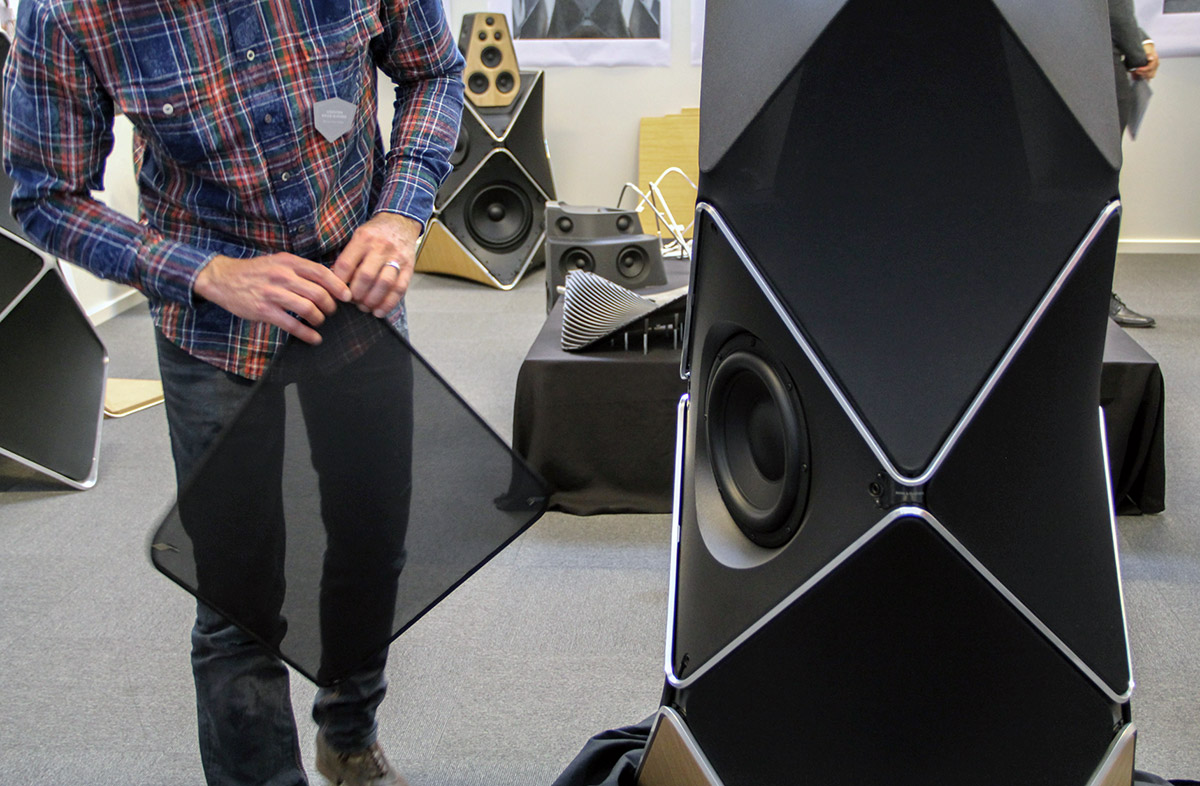
The resulting stiff aluminum skeleton is strong enough to carry the whole top; three delicate aluminum frames are mounted on the outside which aren’t welded to the structure—they’re removable. While originally the speaker was going to be standing on three points, like a stool, it ultimately needed much more volume and power. Thus, the bottom had to be closed to fit in additional electronics. The structure is covered with oak wood panels and semi-transparent fabric pieces (which pop off, priming the BeoLab 90 for customization). “All these challenges we talked about, this has been part of the brief. If you want to create a product that’s different, you need that kind of challenge making the impossible possible—otherwise you end up with something known or expected. And that’s what we really did here,” says André Poulheim.
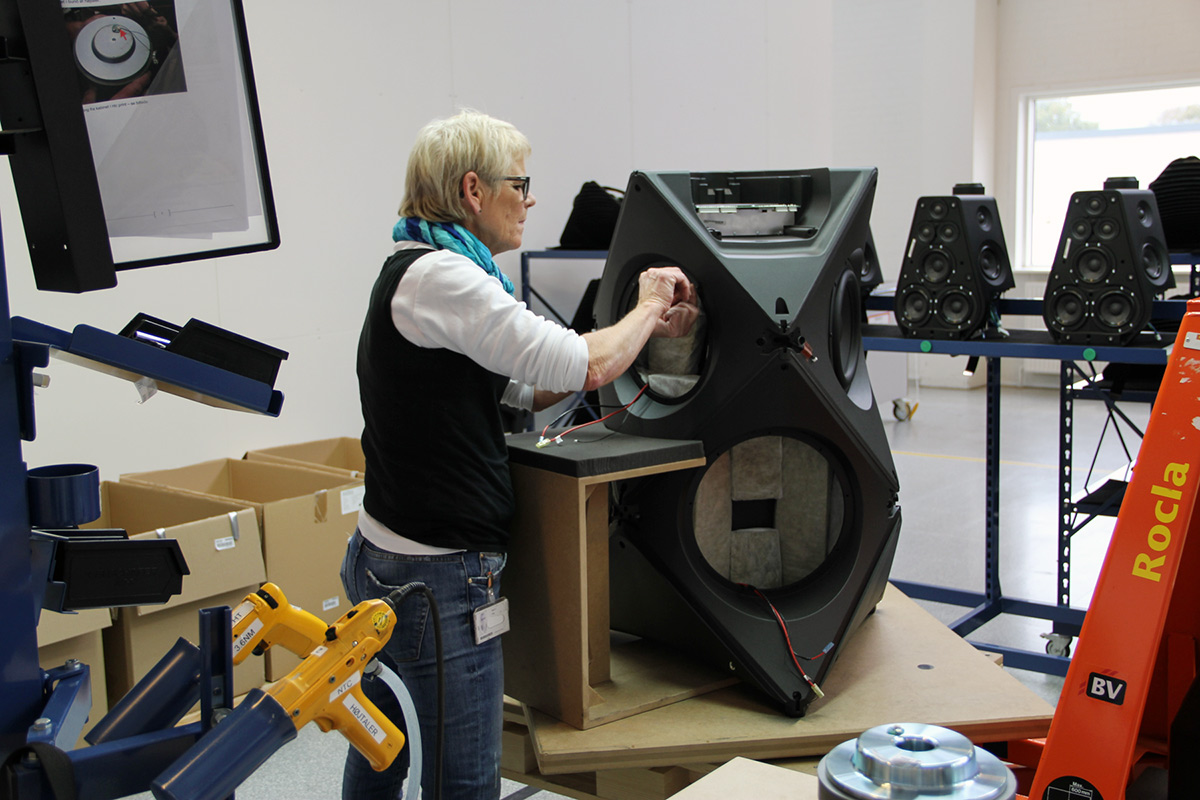
“When people ask me what Bang & Olufsen’s all about, I always say it’s about three things: acoustics, design and craftsmanship,” says CEO Tue Mantoni. The BeoLab 90 is a concept that epitomizes those three areas, he emphasizes. “It will be a product that’s not going to be for everybody, because not everybody has the wallet or appetite for investing in a product like this. But it’s for sure going to a product that a lot of people will know.” Regarding the price, we’ll say one thing: you’d have to pay a few times more for a similar setup from other companies (and there aren’t too many high-end systems that look good). It’s an expensive bargain because the BeoLab 90 is essentially a whole system: it’s an active loudspeaker with 18 independent drivers that doesn’t need separate pre-amps, power amps, DAC, etc. It’s more plug and play—and much less the mix and matching, fiddling and tweaking that pure audiophiles take pleasure in when customizing their complex set-ups. It all depends on what suits your taste and lifestyle, but find comfort in knowing that B&O has poured thousands and thousands of hours into testing and measurements and tweaking of their own to bring owners perfect sound. In fact, some of those hours are spent playing ’90s Eurodance techno at full volume overnight to check how the electronic and magnetic components fare, and if they overheat.

So how did the BeoLab 90 make us feel? When we closed our eyes in Bang & Olufsen’s special listening room, the pair of master reference speakers (#2 and #3 ever made)—along with the room—seemed to vanish the instant a song played. We weren’t listening to sound emanating from two specific points; instead, the Weeknd was singing his heart out right in front of us. Benny Goodman’s band performed an intimate set, and you could picture where each musician was sitting. The BeoLab 90’s ability to create such a lifelike three-dimensional sound stage is unparalleled when you’re sitting in the sweet spot. It certainly brings up the question of whether a speaker can be “too” good for the music—some now-classic albums weren’t necessarily well-recorded and mastered (think of when the Rolling Stones turned the basement of a rented French mansion into a makeshift studio slash drug den). But when all the variables align perfectly, the music engulfs listeners entirely and hits the guts. The result of such incredible technology and engineering happens to be a very visceral human experience.

Now that they’ve made the BeoLab 90, where can Bang & Olufsen go from here? “There are so many places we can go!” Marie Schmidt, head of Brand, Design & Marketing, tells CH. “One of the really cool things about doing this, something we’ve started up some time ago, [is exploring] some of the learnings and technologies that we’ve achieved in BeoLab 90, and how we can use that in smaller products that are available for more people. We’re quite far down that line. Within the next year, you will experience some smaller products that are more accessible.”
BeoLab 90s are currently in production and will be available to experience in select Bang & Olufsen stores around the world beginning 17 November 2015—the exact date of the company’s 90th anniversary. If you’re in love with the B&O philosophy and aesthetic but seek an impactful entry level option, check out the B&O Play line of speakers and headphones.
Final image courtesy of Bang & Olufsen, all other images by Nara Shin








